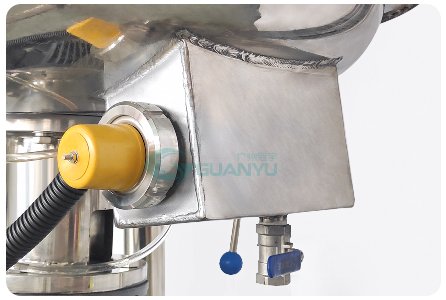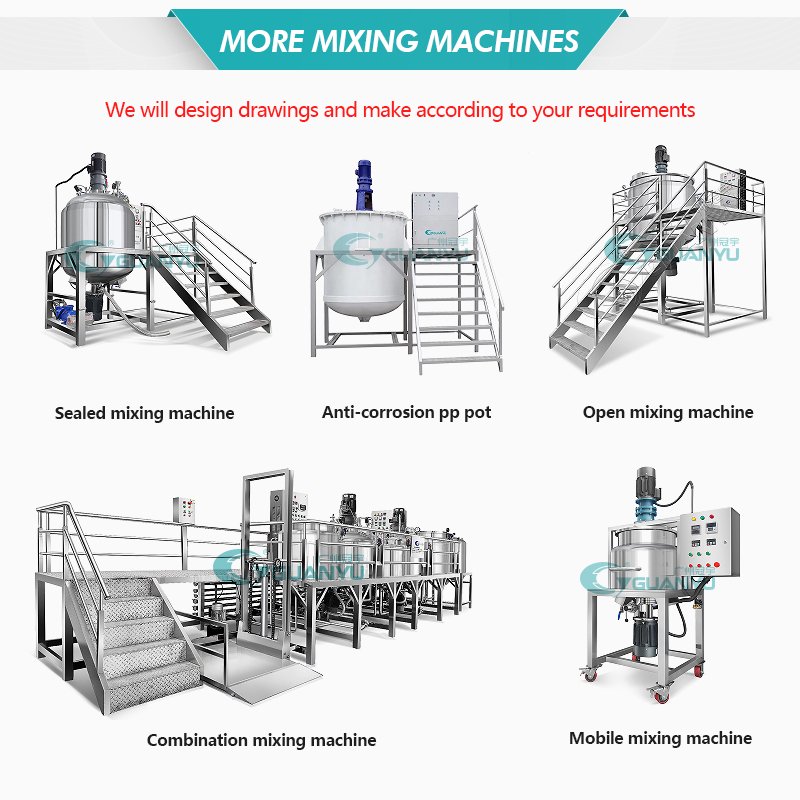Steam Heating
Steam heating offers a range of benefits for mixing machines, making it a widely used method in various industrial applications. One of the primary advantages of steam heating is its ability to provide rapid and consistent temperature control. This is particularly useful in processes that require precise thermal management, such as chemical reactions or pharmaceutical production. Steam can quickly reach high temperatures and maintain them consistently, ensuring uniform heating throughout the mixing process.
Another significant benefit of steam heating is its efficiency. Steam transfers heat through condensation, which is a highly effective method of heat exchange. This results in faster heating times compared to other methods, such as electric heating. Additionally, steam heating systems can be easily integrated into existing steam infrastructure, making it a cost-effective choice for facilities that already use steam for other processes.
However, steam heating is not without its drawbacks. One major disadvantage is the need for a boiler system, which can be expensive to install and maintain. Boilers require regular inspections and maintenance to ensure safe and efficient operation. Moreover, steam systems can pose safety hazards, including the risk of steam leaks and burns, which necessitates stringent safety protocols and training for personnel.
Steam heating is particularly suitable for situations that demand high-temperature processes. Industries such as food and beverage, pharmaceuticals, and chemicals often require precise thermal control and rapid heating, making steam an ideal choice. For example, in the food processing industry, steam is used to achieve the necessary temperatures for pasteurization and sterilization, ensuring product safety and quality.
Case studies illustrate the effectiveness of steam heating in various applications. For instance, a pharmaceutical company might use steam heating in the production of active pharmaceutical ingredients (APIs), where maintaining a specific temperature is crucial for chemical stability and efficacy. Similarly, a chemical manufacturing plant could rely on steam heating for processes that require consistent high temperatures, such as distillation or polymerization.
In conclusion, while steam heating offers rapid heating times and consistent temperature control, it also requires a boiler system and poses potential safety hazards. It is best suited for industries that require high-temperature processes or already have steam infrastructure in place.


Electric Heating for your mixing machine
Electric heating presents several advantages when used in mixing machines. One of the foremost benefits is the precise temperature control it offers. Unlike steam heating, which can be subject to fluctuations, electric heating systems enable consistent and accurate temperature settings, which is particularly crucial in processes requiring exact thermal conditions.
Additionally, electric heating is known for its ease of installation. The convenience of integrating electric heating elements into existing systems without extensive modifications makes it an attractive option. This is especially beneficial in facilities where space constraints or infrastructure limitations make other heating methods less feasible.
Another significant advantage is the lower maintenance requirements associated with electric heating. These systems generally have fewer moving parts compared to steam heating setups, translating to reduced wear and tear and longer intervals between maintenance activities. This can result in lower long-term operational costs and minimized downtime, enhancing overall productivity.
However, electric heating does have its drawbacks. One of the primary disadvantages is the higher operational costs. Electricity can be more expensive than other energy sources, which may impact the overall cost-efficiency of the mixing process, especially in large-scale operations. Additionally, electric heating systems often have slower heating times compared to steam heating, which may be a consideration for processes requiring rapid temperature changes.
Electric heating is particularly suitable in scenarios where precise temperature control is paramount. For instance, in pharmaceutical or food processing industries, where maintaining specific temperatures is critical for product quality and safety, electric heating can be the optimal choice. Furthermore, environments lacking steam infrastructure, such as remote locations or smaller facilities, may find electric heating a more practical solution.
Practical examples include its use in laboratory-grade mixing machines where precision is non-negotiable, and in small-scale production units where installing a steam infrastructure would be impractical or cost-prohibitive. By understanding the specific requirements and constraints of your operation, you can determine if electric heating is the right choice for your mixing machine needs.


Summary
In evaluating whether to choose electric heating or steam heating for your mixing machine, several critical factors must be considered to make an informed decision that aligns with your specific needs and operational circumstances. Both heating methods present unique advantages and potential drawbacks that can significantly impact efficiency, cost, and overall performance within your production environment.
Electric heating is generally praised for its precision and ease of use. It offers consistent and easily controllable temperature settings, making it ideal for processes requiring exact temperature maintenance. Additionally, electric heating systems tend to be more compact and easier to install, which can be advantageous in facilities with limited space. However, it’s essential to consider the potentially higher operational costs due to electricity prices, which can vary significantly by region.
On the other hand, steam heating is often preferred for its efficiency in transferring heat over large areas. It is particularly effective in environments where rapid and uniform heating is necessary. Steam systems can capitalize on existing infrastructure, potentially reducing initial setup costs. However, they require a more complex setup, including boilers and extensive piping, which can increase maintenance needs and initial investment costs. Furthermore, safety considerations are paramount with steam systems due to the high pressures and temperatures involved.
| Aspect | Electric Heating | Steam Heating |
|---|---|---|
| Temperature Control | Highly precise | Moderate precision |
| Installation | Simple, space-efficient | Complex, space-intensive |
| Operational Cost | Depends on electricity rates | Potentially lower, depends on fuel source |
| Maintenance | Lower complexity | Higher complexity |
| Safety | Generally safer | Requires stringent safety measures |
Ultimately, the decision between electric and steam heating for your mixing machine hinges on a careful consideration of these factors. Understanding the specific requirements of your processes, the existing infrastructure, and budgetary constraints will guide you towards the most suitable and efficient heating solution for your operations.
Warmly welcome to contact us, our company official website:https://gzguanyu.en.alibaba.com/productgrouplist-210357808/Vacuum_Emulsifying_Machine.html

Thank you for sharing your info. I truly appreciate your efforts and I am waiting for your
next post thanks once again.
Hello there! I know this is kind of off topic but I was wondering if you knew where I could get a captcha plugin for my comment form?
I’m using the same blog platform as yours and I’m having difficulty finding
one? Thanks a lot!
Do you mind if I quote a couple of your articles as long as I provide
credit and sources back to your blog? My blog is in the exact same area
of interest as yours and my visitors would truly benefit from a lot of the information you provide
here. Please let me know if this okay with you.
Thanks!
I was curious if you ever thought of changing the page
layout of your website? Its very well written; I love what youve got to say.
But maybe you could a little more in the way of content so people could connect
with it better. Youve got an awful lot of text for only having one
or 2 images. Maybe you could space it out better?
Terrific work! This is the kind of information that are meant
to be shared across the web. Disgrace on the search engines for not
positioning this publish upper! Come on over and talk over with my web site .
Thank you =)
Hmm it appears like your site ate my first comment (it was super long) so I guess
I’ll just sum it up what I wrote and say, I’m thoroughly enjoying your blog.
I too am an aspiring blog blogger but I’m still new to everything.
Do you have any helpful hints for beginner blog writers?
I’d really appreciate it.
Pretty portion of content. I simply stumbled upon your weblog and in accession capital to
claim that I get actually loved account your weblog posts.
Any way I’ll be subscribing to your feeds or even I fulfillment you get
admission to persistently quickly.
I’ve been browsing online more than 3 hours nowadays,
yet I by no means found any fascinating
article like yours. It’s beautiful value enough for me.
In my opinion, if all website owners and bloggers made excellent content as you did, the web might be a lot more useful than ever before.
Touche. Great arguments. Keep up the amazing spirit.
I know this if off topic but I’m looking into starting my
own blog and was wondering what all is needed to get setup?
I’m assuming having a blog like yours would cost a pretty penny?
I’m not very web smart so I’m not 100% positive.
Any recommendations or advice would be greatly appreciated.
Cheers
Greetings! This is my first visit to your blog!
We are a group of volunteers and starting a new project
in a community in the same niche. Your blog provided us valuable information to work on. You
have done a outstanding job!
What i do not realize is in truth how you are now not really a lot more smartly-appreciated than you may be right now.
You are very intelligent. You recognize therefore considerably in terms of this
subject, made me personally believe it from numerous numerous
angles. Its like men and women don’t seem to be fascinated unless it is something to do with Girl gaga!
Your individual stuffs excellent. All the time handle it up!
excellent put up, very informative. I wonder why the opposite specialists of this
sector do not understand this. You must proceed your writing.
I am sure, you’ve a huge readers’ base already!
Hello, i think that i saw you visited my website thus i came to “return the favor”.I am trying to find things to enhance my website!I suppose its ok to use some of your ideas!!
This is really interesting, You are a very skilled blogger.
I’ve joined your rss feed and look forward to seeking more of your wonderful post.
Also, I have shared your site in my social networks!
qita doll セックスだけではない、信じられないほどリアルなwmdollがたくさんあります。これらのリアルな人形は、あなたがあなたのセックスだけでなく、仲間に非常に満足するのに役立ちます。あらゆる分野の人々がwm人形に興味を持っていますが、購入する前にいくつかの調査を行うことが重要です。